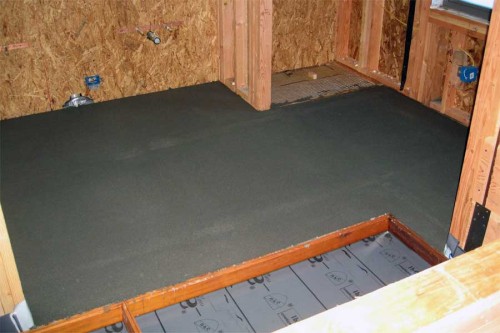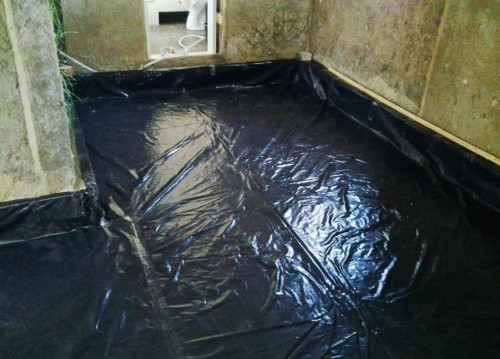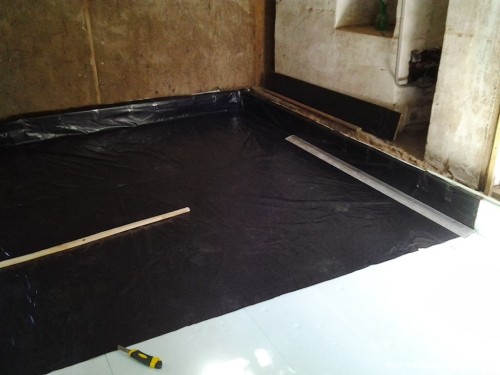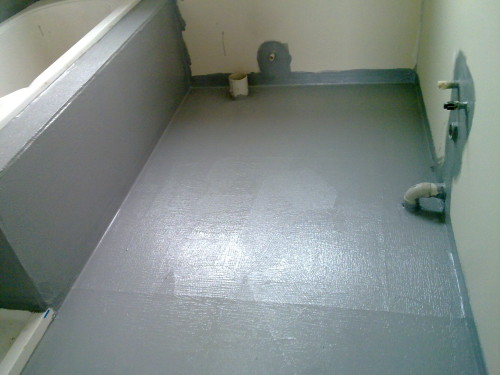
Waterproofing wooden floor with their own hands Insulation,Floors
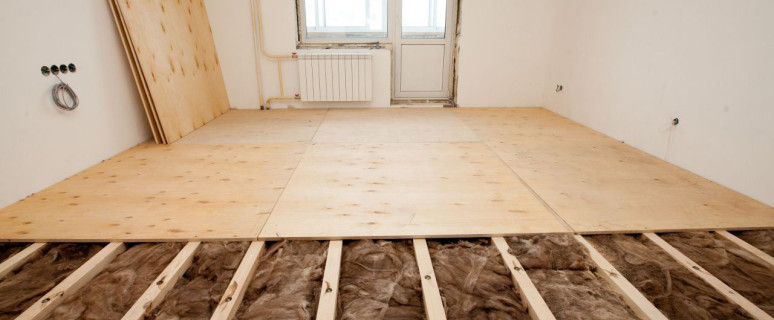
Woodwood waterproofing is an integral part when laying the coating. This is due to the fact that wood is capable of absorbing moisture and during drying to deform. From how waterproofing works were carried out, the service life of the floor covering depends.
Content
Criteria for selecting material
To make the best waterproofing of the wooden floor, you need to adhere to several conditions. The main ones are:
- only fireproof materials are bought;
- all wood is processed by an antiseptic agent and antipiren;
- the humidity of the wooden elements should not be higher than 12%;
- the mandatory presence of an air gap between the draft base and the finishing coating (for efficient ventilation of the underground space);
- conducting waterproofing of the basement (in the presence of basement).
To implement the right choice of waterproofing material, the humidity of the room and the type of insulation used should be taken into account. Many insulation losing their properties when exposed to a wet environment. For this reason, the right choice of waterproofing material will also become the key to minimum heat loss on cold days.
Waterproofing floor in a wooden house can be carried out using:
- special paintwork coatings;
- moisture-resistant mastic;
- rolled products;
- bulk materials.
Special paints
These liquid waterproofing coatings consist of bitumen and polymeric substances that possess moisture-repellent qualities. Material application occurs in several layers. Paints can also be used when carrying out waterproofing work on the screed.
The only drawback of this material for waterproofing the wooden floor is a short service life. With minor temperature fluctuations, the paint layer will endure no more than 5 years.
Waterproofing technology provides:
- grinding of wooden floors;
- cleaning the surface from dirt and dust;
- drying of wooden elements;
- processing of hard-to-reach lacquers;
- staining the surface.
Moisture-resistant mastic
Mastics for waterproofing wooden floor are liquid solutions with increased density. Surface treatment is performed before the finishing flooring flooring. After frozen, the floor becomes moisture-resistant, durable and frost-resistant. The surface is not cracking even with strong temperature differences.
The best option for reliable protection of wood from the wet environment is a mastic from pergamine. It has such advantages:
- long operating period (12-15 years);
- creation of a flexible insulating layer;
- the possibility of finishing the surface without expecting complete drying.
Waterproofing the surface of the mastic consists of such steps:
- cleaning the base;
- climbing cracks and defects;
- applying primer;
- pouring of mastic in 2-3 layers (the total thickness should be within 2.5 cm);
- liquid distribution needle roller.
Roll products
Rolled materials are quite durable and solid products that have a small coefficient of moisture absorption. The main characteristics of waterproofing include:
- high thermal insulation properties;
- resistance to the effects of the chemical environment;
- durability;
- acceptable cost.
As components for the manufacture of rolled waterproofing of wooden floor can be used:
- bitumen;
- fiberglass;
- polyethylene.
Depending on the installation technology, rolled materials are:
- Self-adhesive. Adhesive side glued to the floor.
- Preheating. Before use, the gas burner is heated, as a result of which the material acquires optimal plasticity and is glued to the surface.
- Sticking. Fixation of material occurs using bitumen or special glue.
The most common option is the use of a polyethylene film for waterproofing of a wooden floor. This material does not rot and resistant to mechanical loads. The film is perforated and without perforation.
It is better to use perforated film. The presence of small holes will contribute to the elimination of condensate. Material without perforation will collect moisture.
Polyethylene film laying technology implies:
- connection of the extreme part of adjacent canvases;
- laying paper on top of the fission joints;
- stroking joints hot iron.
Bulk material
In essence, the bulk waterproofer is an excellent alternative solution to the heat-insulating ward. Thanks to this, the material will not only improve the waterproofing properties of the wooden floor, but will become warmer in the house. That is, you can "kill two hares at once": use bulk material as waterproofing and insulation.
One of the popular bulk materials is a ceramzite. This is illustrated by its low price and simplicity of installation work. Ceramzit without problems can be placed between the lags of the wooden floor. For the improvement of waterproofing properties between the material and the concrete screed, the reinforcing mesh is laid.
Features of the use of waterproofing for different types of bases
Wood base
If the wooden floor is used as a rough base, the best option for its waterproofing is a rolled material flooring. It is done in several layers and with the allen 10-15 cm.
It is desirable that the seams of the subsequent layer were located in the middle of the sheet of previously laid waterproofing. The extreme part of the waterproofing material is sicked by silicone sealant. This technology is the most acceptable solution when waterproofing the wooden floor in the bathroom under the tile.
If there are tightly fitted boards at the base, water-resistant impregnations can be used. It is quite suitable to manage or Olife. The only nuance - the surface is thoroughly cleaned and dried.
Concrete screed under wooden floor
Sometimes when replacing the floor covering, you can face that the concrete surface is located under the floor. This is especially characteristic for apartments, where the underground space consists of reinforced concrete overlap.
In this case, the following waterproofing technologies can be used:
- Bulk floor. On the one hand, is the most expensive option. On the other hand, thanks to polymer components (polyurethane or epoxy resin), the coating is performed completely waterproof.
- Rolled or coating material. You can use self-adhesive rolled waterproofing.
- Penetrating waterproofing. A dry mixture is purchased ("Lachta", Penetron or others), which is diluted with water. The concrete base is moistened, after which is covered with penetrating composition. As a result of penetration into the pores, the active components of the composition turn into crystals that pushed moisture.
- Pour a concrete screed with dilution of cement mix with special additives.
Finish wooden coating
Polymer or bitumen varnishes are used for waterproofing the finishing of wood. For their application, rollers or paintopults are applied. To create a reliable waterproofing barrier, the surface is covered with 2-3 layers of varnish.
In addition to improving moisture-proof properties, the use of polymer varnish gives a peculiar natural color and makes the coating as resistant to mechanical loads.
Conducting waterproofing in wet rooms
Immediately it should be noted that in rooms with high humidity applies the appropriate flooring. Wood must have the maximum resistance to the impact of the wet environment.
Works are carried out during air humidity not exceeding 60%. You can use the finish material:
- cork;
- thermoderial;
- larch;
- tick.
The floor is processed by special moisture-resistant compositions (versa, bitumen, parquet or primer varnish) several times. Only so you can provide absolute moisture resistance of the surface.
Corners, joints and sections of the floor, where moisture getting inevitably, close in moisture-resistant ribbon. Voids are closed with rubber liners. In a wooden house from logs, it is better to use eco-insulating material, which includes fibers of flax. On top of the insulation to lags, the moisture-resistant plywood is attached to which the rolled material is stacked.
Water-insulation of the wooden floor in the bath is a mandatory procedure, regardless of whether it is made of coniferous rocks (differ in high moisture resistance). Usually, waterproofing works in this room pursue one goal - water should not accumulate on the floor.
Usually dirty water goes into the slots, which are left in the floor. Moreover, it can go as directly into the soil, and to gather in the catchment breaker. As a waterproofing material in the bath, it is also better to use the rolled material, on top of which the molten bitumen is applied.
Wood is a material that is quite sensitive to temperature and humidity drops. In addition to the deformation of the wooden coating, the wet environment (it is the reason for the appearance of mold and fungus) negatively affects human health. Based on this, the conduct of waterproofing work should be suitable with full responsibility.
Water floor insulation video:




